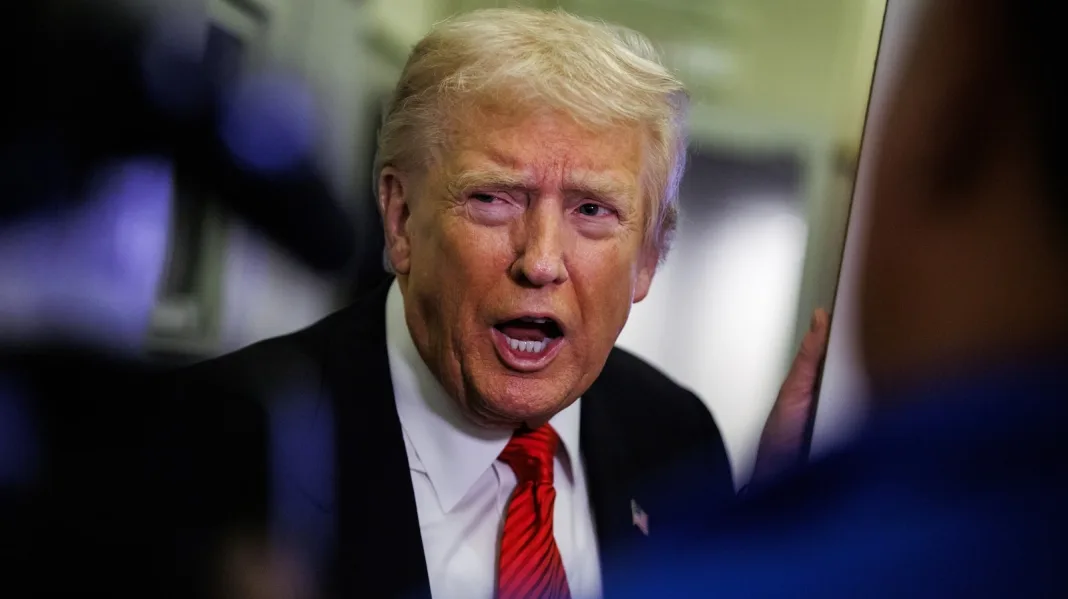The Trump administration has committed to partially funding the Supplemental Nutrition Assistance Program with a $4.65 billion payment — but using emergency funds to pay for reduced SNAP benefits could take “a few weeks to up to several months,” a top USDA official told a federal judge in a sworn court filing Monday.
The disclosure comes after a federal judge in Rhode Island ordered the Trump administration to use emergency funds to pay for SNAP amid an ongoing government shutdown by Wednesday. Following the court order on Friday, Trump said it would be his “honor” to fund the food assistance program.
In addition to the delay, the Trump administration also said it was $4 billion short of the expected $8 billion cost to fund SNAP for the month of November, in part because they are declining to tap an additional bucket of emergency funds held by the USDA, which runs SNAP.
“Defendants have worked diligently to comply with the Court’s order on the short timeline provided by the Court and during a government shutdown,” DOJ lawyers wrote Monday’s filing.
“I have instructed our lawyers to ask the Court to clarify how we can legally fund SNAP as soon as possible,” Trump posted on social media late Friday. “If we are given the appropriate legal direction by the Court, it will BE MY HONOR to provide the funding.”
The $4.65 billion in funding will pay out 50% of the benefits that are due to SNAP recipients in November, according to a declaration from Patrick Penn, Deputy Under Secretary for Food, Nutrition, and Consumer Services.
That payment will completely expend SNAP’s contingency funding, according to Penn.

President Donald Trump speaks to reporters aboard Air Force One en route to the White House, November 2, 2025 after taking off from Palm Beach International Airport in West Palm Beach, Fla.
Samuel Corum/Getty Images
“This means that no funds will remain for new SNAP applicants certified in November, disaster assistance, or as a cushion against the potential catastrophic consequences of shutting down SNAP entirely,” he said.
While the Trump administration could use additional funds from tariff revenue, known as Section 32, Penn said the government declined to do so to save the money for child nutrition programs.
“Amid this no-win quandary and upon further consideration following the Courts’ orders, USDA has determined that creating a shortfall in Child Nutrition Program funds to fund one month of SNAP benefits is an unacceptable risk, even considering the procedural difficulties with delivering a partial November SNAP payment, because shifting $4 billion dollars to America’s SNAP population merely shifts the problem to millions of America’s low income children that receive their meals at school,” Penn said.
Beyond the budget shortfall, Penn warned that distributing the reduced benefits could take weeks or months because of “procedural difficulties.”
“There are procedural difficulties that States will likely experience which would affect November SNAP benefits reaching households in a timely manner and in the correctly reduced amounts,” he wrote. “There are procedural difficulties that States will likely experience which would affect November SNAP benefits reaching households in a timely manner and in the correctly reduced amounts.”
Sen. Amy Klobuchar (D-Minn.), the top Democrat on the Senate Agriculture Committee, criticized the administration’s decision to not tap tariff revenue to fullyfund SNAP.
“The courts have ordered the administration to use its contingency fund to partially cover food assistance to families in need this month — and have made clear it can use its transfer authorities to fully fund SNAP,” Klobuchar said in a statement. “It is not enough to do the bare minimum — the administration should stop playing politics with hunger and use all available resources to ensure Americans can put food on the table.”





